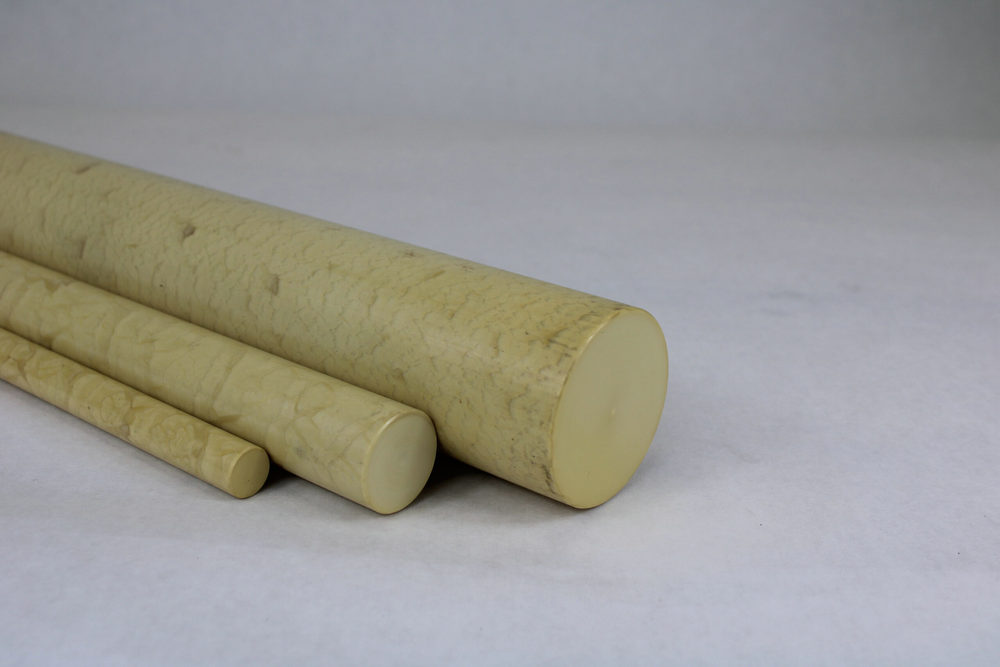
Polyether Ketone (PEK) is a member of the polyaryletherketone (PAEK) family, a class of ultra-high-performance thermoplastic polymers known for their outstanding mechanical, thermal, and chemical stability. Compared with its better-known cousin, PEEK (Polyether Ether Ketone), PEK exhibits a lower ether-to-ketone ratio in its molecular structure, resulting in superior heat resistance, rigidity, and mechanical strength.
This article explores the physical and chemical properties, major applications, and market prospects of PEK, a material increasingly used across aerospace, automotive, electronics, and advanced industrial applications.
PEK's repeating unit is poly(oxy-1,4-phenylenecarbonyl-1,4-phenylene), consisting of aromatic rings linked by ether and ketone groups. The rigid chain structure gives PEK its high crystallinity and excellent dimensional stability.
Melting Point (Tm): ~375 °C, higher than PEEK (343 °C)
Glass Transition Temperature (Tg): ~160 °C
Continuous Service Temperature: 260 °C (short-term up to 300 °C)
Heat Deflection Temperature (HDT): 186 °C (1.82 MPa)
Coefficient of Thermal Expansion: 5×10⁻⁵/K (23–100 °C)
These values show that PEK maintains mechanical strength and dimensional accuracy under extreme thermal stress.
Tensile Strength: 86 MPa
Tensile Modulus: 4.0 GPa
Flexural Strength: up to 200 MPa (with carbon fiber reinforcement)
Friction Coefficient: 0.2–0.3
PEK shows exceptional wear resistance and self-lubrication, even under high-temperature frictional contact conditions.
PEK resists almost all organic solvents, weak acids, and alkalis, and can withstand over 1,500 autoclave sterilization cycles at 134 °C without degradation. It only dissolves in concentrated sulfuric acid at room temperature.
Volume Resistivity: 10¹⁴ Ω·cm
Dielectric Constant: 3.2–3.3
Dielectric Loss Tangent: 0.0016
Arc Resistance: 175 V
PEK also withstands up to 1100 Mrad gamma radiation, making it ideal for high-voltage and nuclear applications.
Flame Retardancy: UL94 V-0 without additives
Low Smoke and Toxic Gas Emission
Biocompatibility: Suitable for external medical devices and surgical tools
Engine components (seals, bearings, turbine blades)
Lightweight structural panels and brackets
Electrical insulation and wire protection with radiation resistance
PEK helps reduce aircraft and spacecraft weight while maintaining high strength under 300 °C operating conditions.
Engine and transmission components such as piston rings, gears, and fuel system parts
Carbon fiber–reinforced PEK offers strong lightweight alternatives for car body structures
Wafer carriers, CMP retaining rings, and connectors
Lithium battery and fuel cell components
Low dielectric loss makes PEK ideal for high-frequency signal transmission
Bearings, seals, and compressor components exposed to high wear
Precision mechanical parts requiring dimensional stability
Chemical processing equipment for corrosive media
The global demand for PEK is steadily increasing, driven by the aerospace, EV, and semiconductor industries. While PEEK currently dominates the high-performance polymer market, PEK is emerging as a cost-effective alternative where even higher heat resistance and dimensional precision are required. With advances in polymer synthesis and carbon fiber composite technology, PEK's future applications will expand across robotics, renewable energy, and next-generation electronics.
Polyether Ketone (PEK) stands out as a new-generation high-performance polymer, bridging the gap between PEEK and the ultra-expensive PEKK. Its combination of thermal endurance, chemical resistance, and mechanical stability positions it as an ideal material for extreme conditions - pushing the boundaries of modern engineering design.